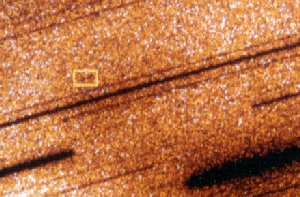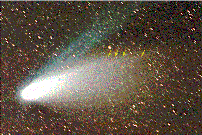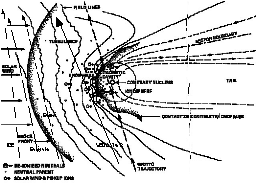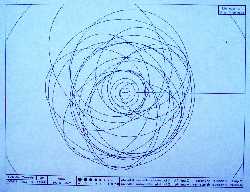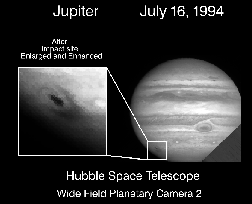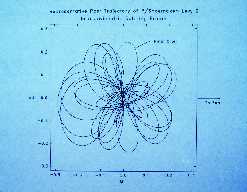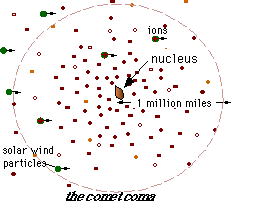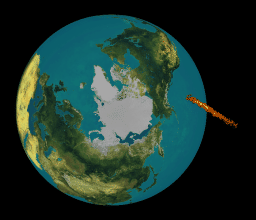
Courtesy of Dr. Louis A. Frank, The University of Iowa and NASA
Small Comets
In 1997, we released a piece called "Snowballs Entering the Earth's Atmosphere?" We were recently alerted that those snowballs may have been identified and classified! Here's the scoop!These snowballs have been labelled small comets. The hypothesis holds that these small comets are millions of times smaller than larger comets like Halley's or Linear, but they are mainly made of water like these larger comets. They lack dust and iron though and so they do not glow or produce a bright tail. These small comets don't come from the Oort cloud like 'traditional comets', but from a belt of cometary material just beyond the orbit of Neptune.
Scientists aren't sure how long these small comets have been crashing into the Earth's atmosphere -- possibly for the last 4.5 billion years! If that's true, then some or all of the Earth's water probably did come from these small comets.
It's been estimated that one 20-40 ton comet hits the Earth every three seconds. Small comets are not a danger to humans on Earth. They are loosely packed "snowballs" that get torn apart by electrostatic stress. So, they crumble apart at about 800 miles above the Earth and are vaporized by the Sun by about 600 miles above the Earth.
Small comets also impact the Moon and other planets, though there are hardly any hitting Mercury and Venus because the Sun's heat destroys the comets at that distance.
The Polar spacecraft may have confirmed the existence of these small comets originally found by Louis A. Frank of the University of Iowa. But, it sees the small comets at a great distance. The next step in investigating these snowballs is to send a spacecraft to see the small comets up close! That will help us to know whether or not this snowball hypothesis is correct!
This small comets hypothesis is very controversial. Some scientists believe the comets exist, while others are very doubtful about their existence. They think that Dr. Frank is indeed seing something, but that several lines of evidence show that what he sees cannot possibly be comets. The debate in the scientific community about the small comet hypothesis is still going on!






